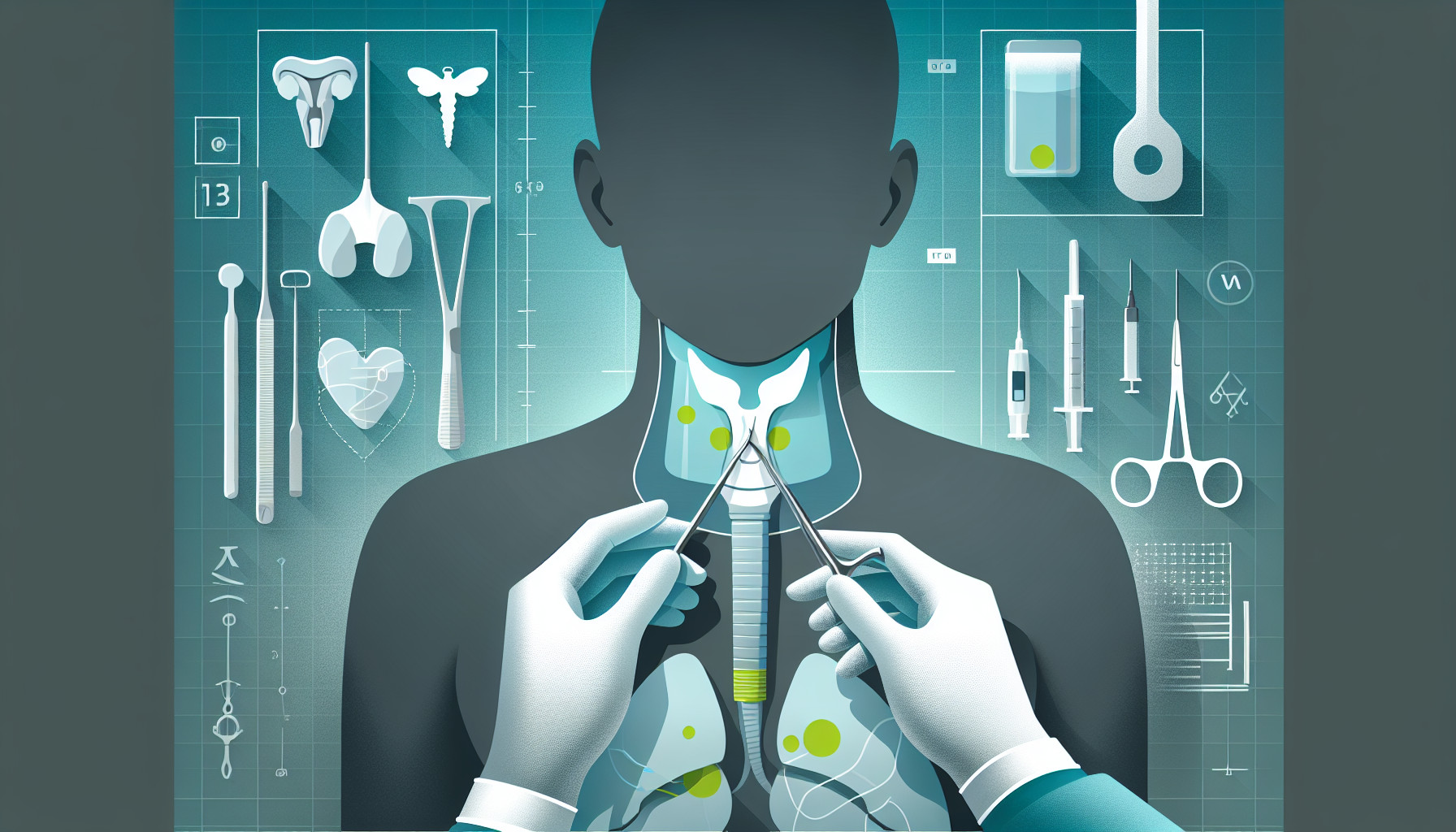Our Summary
This research paper is about a condition called hypoparathyroidism that can happen after a total thyroidectomy, which is a surgery where the entire thyroid gland is removed. There are two types of hypoparathyroidism that can occur. The first happens soon after the surgery, is common, and usually doesn’t last very long. The second type is rarer and occurs when the parathyroid function remains impaired for more than six months after the surgery. This condition is serious and steps should be taken to prevent it during the surgery. The research paper aims to provide practical advice for surgeons to prevent, identify, and treat this condition after a total thyroidectomy. These recommendations are based on a consensus reached by several French medical and surgical associations, and are based on an analysis of recent scientific literature.
FAQs
- What is hypoparathyroidism that can occur after a total thyroidectomy?
- What are the two types of hypoparathyroidism that can happen post-surgery?
- What is the aim of the research paper on hypoparathyroidism after a total thyroidectomy?
Doctor’s Tip
One helpful tip a doctor might tell a patient about thyroidectomy is to make sure to follow up with regular blood tests to monitor thyroid hormone levels and to check for any signs of hypoparathyroidism. It is important to communicate any symptoms such as muscle cramps, tingling in the hands or feet, or changes in mood or energy levels to your healthcare provider. Additionally, taking calcium and vitamin D supplements as prescribed by your doctor can help prevent and manage hypoparathyroidism after surgery.
Suitable For
Patients who are typically recommended for thyroidectomy include those with:
Thyroid cancer: Thyroidectomy is often recommended for patients with thyroid cancer to remove the tumor and prevent it from spreading to other parts of the body.
Benign thyroid nodules: Thyroidectomy may be recommended for patients with large or symptomatic benign thyroid nodules that are causing difficulty swallowing or breathing.
Hyperthyroidism: Thyroidectomy may be recommended for patients with hyperthyroidism who do not respond to medication or radioiodine therapy.
Graves’ disease: Thyroidectomy may be recommended for patients with Graves’ disease who do not respond to medication or radioiodine therapy.
Recurrent thyroid nodules: Thyroidectomy may be recommended for patients with recurrent thyroid nodules that continue to grow or cause symptoms despite previous treatments.
Thyroid nodules with indeterminate or suspicious cytology: Thyroidectomy may be recommended for patients with thyroid nodules that have indeterminate or suspicious cytology on fine-needle aspiration biopsy.
Large multinodular goiter: Thyroidectomy may be recommended for patients with a large multinodular goiter that is causing compressive symptoms or cosmetic concerns.
Familial thyroid cancer: Thyroidectomy may be recommended for patients with a family history of thyroid cancer or genetic mutations that increase the risk of developing thyroid cancer.
It is important for patients to discuss the risks and benefits of thyroidectomy with their healthcare provider to determine if it is the best treatment option for their specific condition.
Timeline
Before a thyroidectomy:
- Patient undergoes pre-operative assessments and consultations with their healthcare team
- Patient may be prescribed medications to prepare for surgery
- Patient may need to fast before the surgery
- Patient is informed about the risks and benefits of the surgery
After a thyroidectomy:
- Patient is monitored closely in the recovery room for any immediate complications
- Patient may experience pain, swelling, and difficulty swallowing in the days following the surgery
- Patient will need to take thyroid hormone replacement medication for the rest of their life
- Patient may experience temporary changes in voice or difficulty speaking
- Patient will have follow-up appointments with their healthcare team to monitor their recovery and adjust medications as needed
In the case of hypoparathyroidism:
- Patient may experience symptoms such as tingling, muscle cramps, and fatigue due to low levels of calcium in the blood
- Patient may need to take calcium and vitamin D supplements to manage the condition
- Patient may need to have regular blood tests to monitor their calcium levels
- Patient may need to make dietary changes to ensure they are getting enough calcium and vitamin D
- In severe cases, patient may need to receive injections of calcium or other treatments to manage the condition
What to Ask Your Doctor
- What is the likelihood of developing hypoparathyroidism after a total thyroidectomy?
- What steps will be taken during the surgery to minimize the risk of developing hypoparathyroidism?
- How will I be monitored for signs of hypoparathyroidism after the surgery?
- What symptoms should I watch for that may indicate hypoparathyroidism?
- What treatment options are available if I do develop hypoparathyroidism after the surgery?
- How long does it typically take for parathyroid function to return to normal after a total thyroidectomy?
- Are there any long-term complications or risks associated with hypoparathyroidism?
- How often will I need follow-up appointments to monitor my thyroid and parathyroid function post-surgery?
- Are there any lifestyle changes or dietary recommendations I should follow to support my thyroid and parathyroid health after the surgery?
- Are there any additional resources or support groups available for individuals who have undergone a total thyroidectomy and may be at risk for hypoparathyroidism?
Reference
Authors: Frey S, Van Den Heede K, Triponez F, Bizard JP, Godiris-Petit G, Pattou F. Journal: J Visc Surg. 2023 Jun;160(3S):S95-S109. doi: 10.1016/j.jviscsurg.2023.05.004. Epub 2023 May 19. PMID: 37211443
